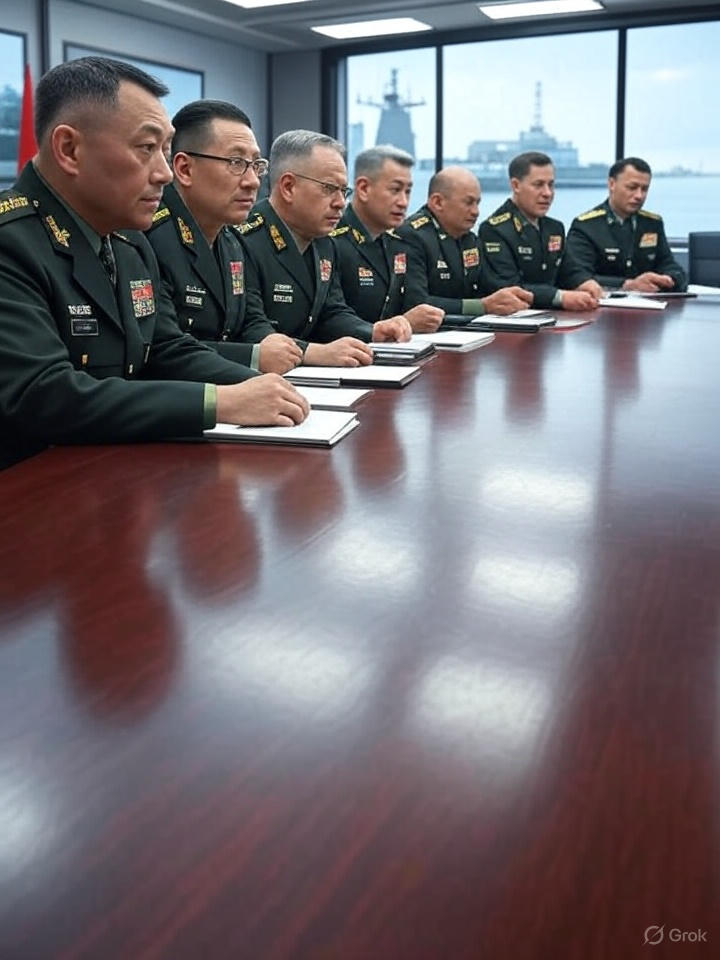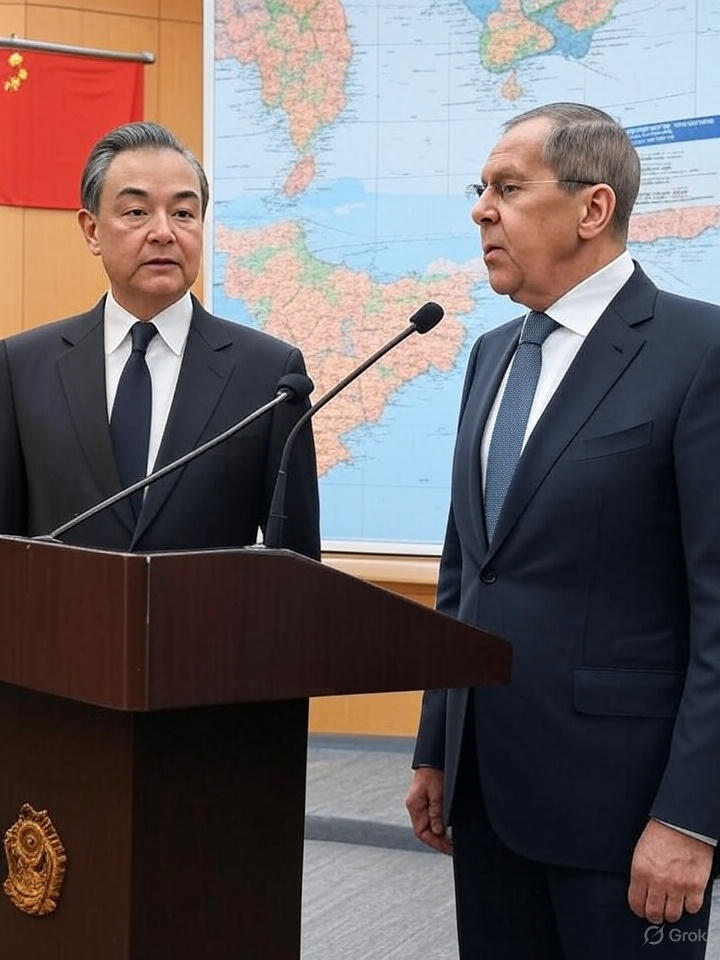On July 30,31, 2025, China formally announced it will conduct joint naval exercises and maritime patrols with Russia in early August 2025, further deepening their strategic partnership amid rising global tensions. Dubbed “Joint Sea 2025,” the five day exercise is set to occur from August 1 to August 5, 2025, in maritime and airspace near Vladivostok, within Russia’s Pacific Fleet zone. The drills will be followed by a sixth joint maritime patrol in key areas of the Western Pacific Ocean (Global Times).
Operational Details
- A Chinese Defense Ministry spokesperson, Zhang Xiaogang, stated the exercise includes sea and air operations and makes clear it is not directed at any third party(Globedge).
- The stated goals include safeguarding strategic maritime routes and countering security threats in the Western Pacific under a theme of bilateral strategic coordination (Global Times).
- The operation will feature:
- Chinese assets from the PLA Navy Eastern and Northern Theater Commands, including destroyers Shaoxing and Urumqi, replenishment ships like Qiandaohu, rescue ship Xihu, fixed wing aircraft, helicopters, and marine infantry.
- Russian participation includes the anti submarine ship Admiral Tributs, corvette Rezky, rescue ship Igor Belousov, along with aircraft, helicopters and marine corps units; submarines may also be involved (Global Times, SSBCrack News).
- The exercise is structured in three phases: force assembly, joint planning (including tactical studies and map exercises), and live drills such as air defense, anti submarine warfare, escort operations, and joint command control actions (Global Times).
Strategic Significance
1. Acceleration of Military Coordination
These drills underscore a pattern of annual cooperation between China and Russia alternating between Chinese and Russian waters each year. “Joint Sea” maneuvers have been held since 2012, evolving into major interoperability platforms (Wikipedia).
2. Broadening Maritime Patrol Reach
After drills, the participating forces will launch the sixth combined maritime patrol in the Western Pacific. In 2024, dual patrols marked the first time more than one occurred in a single year reflecting intensifying collaboration beyond mere exercises (SSBCrack News).
3. Message of Strategic Defiance
Although Chinese officials maintain the exercises are routine and not targeted at any country, Western observers especially Japan and U.S. analysts have expressed concern over the joint drills reflecting growing Sino Russian opposition to the U.S. led security order (AP News, ABC News, Newsweek). In its statement, Zhang explicitly criticized U.S. military drills in the region, calling them destabilizing (AP News).
Broader Context
- This exercise is part of a long standing and expanding military partnership, which includes China providing economic and material support to Russia amid Western sanctions for its war in Ukraine. Beijing has notably refrained from criticizing Moscow and instead calls for “mutual support” in global affairs (AP News).
- Regional governments particularly Japan have flagged growing bilateral naval cooperation as a concern for regional security, especially in light of increased joint patrols in strategic sea lanes (AP News, South China Morning Post, Newsweek).

Summary Table
| Aspect | Details |
|---|---|
| Exercise Name & Dates | Joint Sea‑2025, August 1 to 5, 2025 |
| Location | Near Vladivostok, Russian Pacific Fleet waters |
| Follow-up Patrol | Sixth China Russia maritime patrol in Western Pacific |
| Key Activities | Three phase operations: assembly, planning, live drills (ASW, air defense, escort ops etc.) |
| Participants | PLA Eastern/Northern naval units; Russian Pacific Fleet (ships, aircraft, marines, subs) |
| Purpose Stated | Routine bilateral exercise, not aimed at any third party |
| Strategic Objective | Deepen maritime interoperability; assert global presence; protect shared sea routes |
| Regional Reaction | Japan and Western officials express concern; China insists on peaceful rationale |
Final Analysis
The announcement of Joint Sea 2025 and the accompanying maritime patrols mark another step in the intensifying military alignment between Beijing and Moscow. These joint operations especially in close proximity to Japan and U.S. partner zones suggest a concerted effort to project strength and demonstrate increased interoperability in naval domains.
By combining advanced surface combatants, submarines, air assets, and marines in complex multi phase drills, China and Russia signal beyond mere cooperation they assert shared maritime influence. While they frame the exercises as routine and apolitical, the timing and scale reflect an emerging front in the broader strategic competition with Western powers.
With the sixth joint patrol in a single year now underway, the strategic message is clear: Beijing and Moscow are creating credible maritime synergy capable of challenging U.S. led naval dominance across key Indo Pacific corridors.

